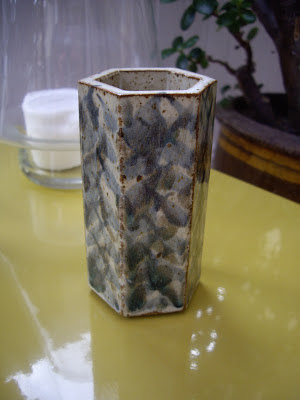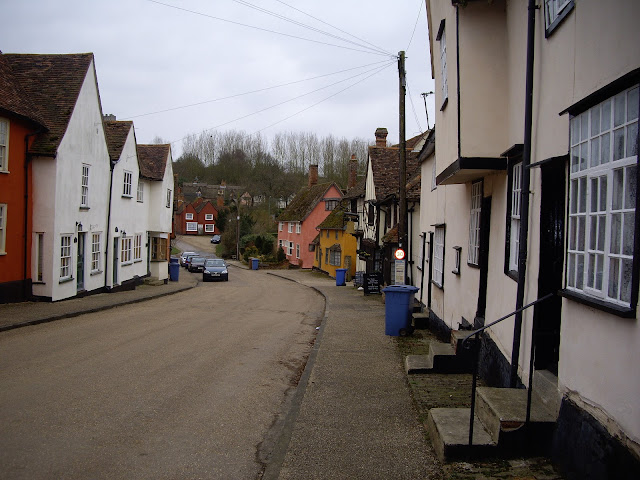Good morning (bleary-eyed here). Another bad night's sleep. Possibly too much to worry about in my life. My father is still ill. My aunt is facing the future with cancer. And I am their nearest relative....
I thought I'd post this article I wrote a year or so ago and was not used. Re-reading it it can get a bit strident, but I was striving to make a point abot Benedict and his world - he was not alone. Arrogantly (?) I wanted to challenge the assumptions of the reader in the pew, and present a different perspective on Church history. One not based on hundreds of years of 'propaganda'. (Ask most people and I reckon they would still believe that Pope Gregory the Great invent Gregorian Chant. He didn't.) Although I hadn't space to mention them in my article the real fathers of Western Monasticism were St Martin of Tours and St John Cassian. Both of them worked in Gaul.
In my article I write that Benedict worked as part of a great network of Monasticism. To give a further example: uniquely in Late Antiquity there were monasteries attached to the Great Basillicas in Rome, eg St Peter's. I believe that the Monastic rules used there are still (?) unknown. (There is no confirmed use of the Rule of St Benedict in Rome before the 10th century.) Anyway the Liturgy of these Basilican monasteries formed the basis for the liturgical instructions of both the Regula Monasterium (Rule of St Benedict) and the 'Rule of the Master' - more of the latter in my article. Not only that, Eastern forms underly and influence directly the rule and the liturgy it contains.
St Benedict of Nursia –
July 11th
We know so
little of the life of St Benedict - Abbot of Monte Cassino and so-called ‘founder
of Western Monasticism’ - that it would be possible to condense all that we can
verify into one sentence; perhaps even leave a blank page for there is so
little hard fact that some modern scholars have doubted his existence. For another, the Rule for which Benedict is
famous can merely ‘ascribed’ to an abbot called Benedict. The problem is this: for the details of Benedict’s
life we have to rely on Book 2 of the Dialogues
of Pope Gregory the Great – a text of doubtful authenticity – and there is
little other evidence, even within the Rule itself, to corroborate Gregory’s
story.
According to the
Dialogues (which gives no dates) Benedict
was born in Nursia in modern Umbria,
probably at the end of the fifth century. Like many others in a civilization that was
disintegrating, Benedict as a young man looked to the religious life for
structure and purpose. He became a hermit. His rigorous askesis earned him a reputation for holiness and as a result
Benedict’s life became problematic. There was an unsuccessful time as abbot of
a local monastery, from which he tried to return to the eremetic path, but like
a guru in modern India,
he drew followers, and they had to be organised into a community. Worst of all Benedict attracted animosity,
and it was this prolonged antagonism that eventually led him and a select
number of followers to head south to the area between Rome
and Naples, to a hill top above the city of Cassinum – Monte Cassino. And it is for this new community that the
Rule was compiled, and from which, according to the Dialogues, Benedict successfully converted the local population to
Christianity.
This traditional
view of Benedict as ‘pioneer’ monastic and evangelist – a latter-day Moses - is
now largely discredited. There was
already a strong monastic tradition in Rome and
across Italy. Benedict worked within a network of ascetics
and monasteries that spanned North Africa, Italy and southern Gaul, and further east to Egypt and Palestine. The rule reflects this: influences include
the rules of Pachomius, John Cassian , Augustine, and Caesarius. The main source however is the Regula Magistri written some three
decades earlier by an unknown abbot of an unknown southern Italian
monastery. Most scholars now accept that
the most famous and spiritual chapters of Benedict’s rule are taken verbatim
from the Regula.
So,
how is that that Benedict, who died in obscurity sometime between 547 and 550,
came to be regarded as the ‘Patriarch of Western Monasticism’? There is the rule itself. There is much to commend it: written in
elegant clear Latin it is sensible and moderate in its demands on those who
follow it. The popularity too of the Dialogues helped spread the cultus of Benedict across Western Europe.
However the real impetus came with the rise of the Carolingian
Empire. The Emperors wanted religious
conformity across the Empire, and this meant the Roman Rite and, thanks to
another Benedict - Benedict of Aniane, Benedictine Monasticism; everything else
was simply suppressed, sometimes by force.
Thanks to the zealousness of that second Benedict the Celtic, Gallican
and Ambrosian monastic traditions within the Empire were destroyed.





























